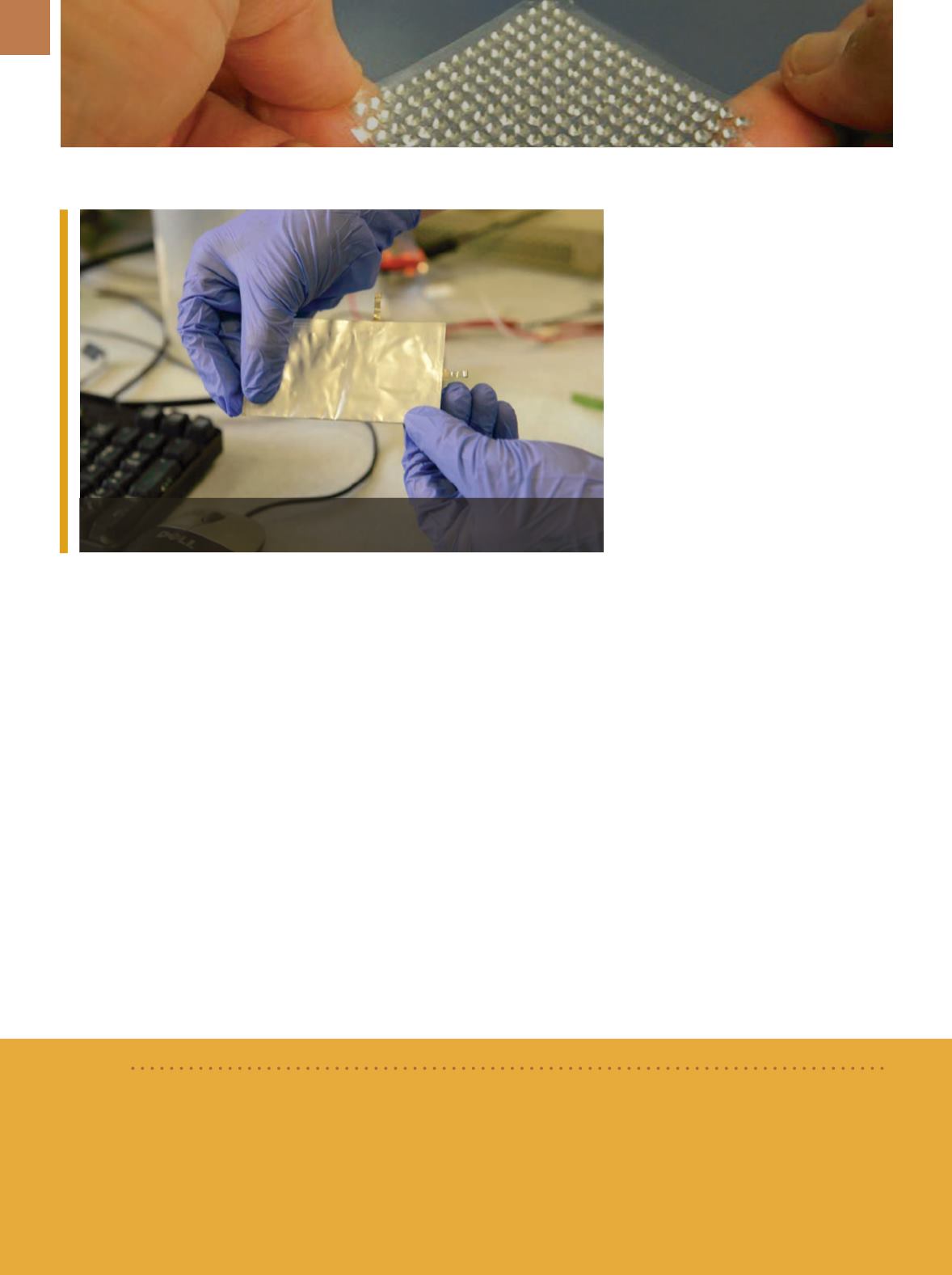

A D V A N C E D M A T E R I A L S & P R O C E S S E S | J U N E 2 0 1 5
1 4
ALUMINUM BATTERY
CHARGES IN ONE MINUTE
Stanford University, Calif., scien-
tists invented the first high-performance
aluminum battery that is fast-charging,
long-lasting, and inexpensive. “We devel-
oped a rechargeable aluminum battery
that may replace existing storage devic-
es, such as alkaline batteries, which are
bad for the environment, and lithium-ion
batteries, which occasionally burst into
flames,” says Hongjie Dai, professor of
chemistry. “Our new battery won’t catch
fire, even if you drill through it.”
Aluminum has long been an at-
tractive battery material, mainly due
to its low cost, low flammability, and
high-charge storage capacity. For de-
cades, researchers have unsuccessfully
tried to develop a commercially viable
aluminum-ion battery. A key challenge
is finding materials capable of produc-
ing sufficient voltage after repeated
cycles of charging and discharging.
An aluminum-ion battery consists of
two electrodes—a negatively charged
anode made of aluminum and a posi-
tively charged cathode. “People have
tried different kinds of materials for the
cathode,” says Dai. “We accidentally
discovered that a simple solution is to
use graphite, which is basically carbon.
We identified a few types of graphite
material that give us very good perfor-
mance.” For the experimental battery,
the team placed the aluminum anode
and graphite cathode, along with an
ionic liquid electrolyte, inside a flexible
polymer-coated pouch. “The electrolyte
is basically a salt that’s liquid at room
temperature, so it’s very safe,” adds
Dai.
For more information: Hongjie Dai,
hdai1@stanford.edu, www.stanford.edu.
PLASTIC BATTERY IS SAFE
FOR ENVIRONMENT
Researchers at the University of
Houston developed an efficient con-
ductive electron-transporting poly-
mer, a long-missing puzzle piece that
will allow ultrafast battery applica-
tions. The discovery relies on a “con-
jugated redox polymer” design with
a naphthalene-bithiophene polymer,
which has traditionally been used for
applications including transistors and
solar cells. With use of lithium ions as
dopant, researchers found it offered
significant electronic conductivity and
remained stable and reversible through
thousands of cycles of charging and
discharging.
The breakthrough addresses a
decades-long challenge for electron-
transport conducting polymers, says
Yan Yao, assistant professor of electrical
and computer engineering. Researchers
have long recognized the promise of
functional organic polymers, but until
now have not been successful in devel-
oping an efficient electron-transport
conducting polymer to pair with the
established hole-transporting poly-
mers. The lithium-doped naphthalene-
bithiophene polymer exhibits significant
electronic conductivity and is stable
through 3000 cycles of charging and dis-
charging, according to the researchers.
For more information: Yan Yao,
yyao4@ uh.edu, www.egr.uh.edu.A flexible, high-performance aluminumbattery charges in about one minute.
Courtesy of Mark Shwartz/Stanford.
BRIEF
Scientists at the
DOE’s Lawrence Berkeley National Laboratory,
Calif., quantitatively show in a new study that electric vehicles
(EVs) will meet the daily travel needs of drivers longer than commonly assumed. Many drivers and much prior literature on the
retirement of EV batteries assumed that the battery will be retired after losing 20% of its energy storage or power delivery capabil-
ity. The new study shows that the daily travel needs of drivers continue to be met well beyond these levels of battery degradation.
science.energy.gov.
ENERGY TRENDS


















